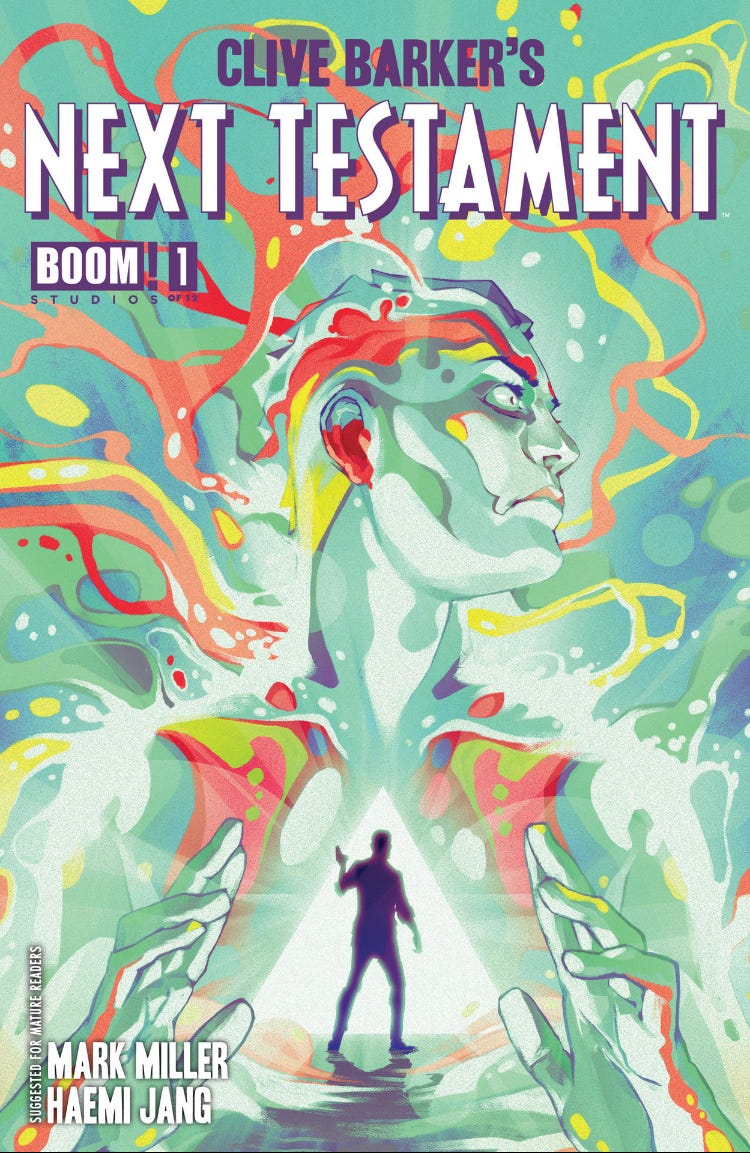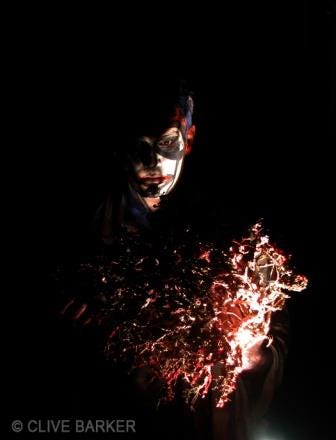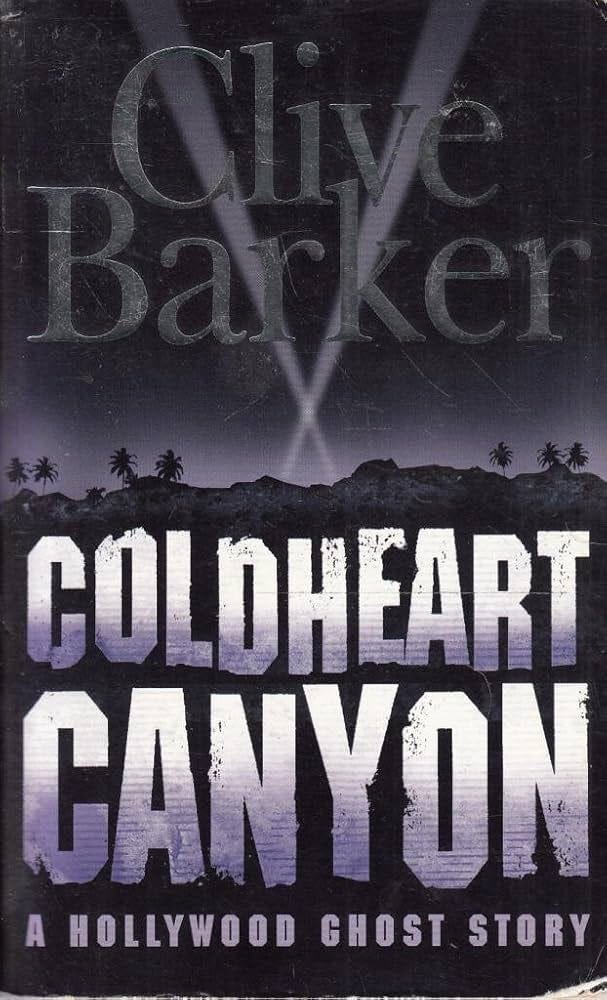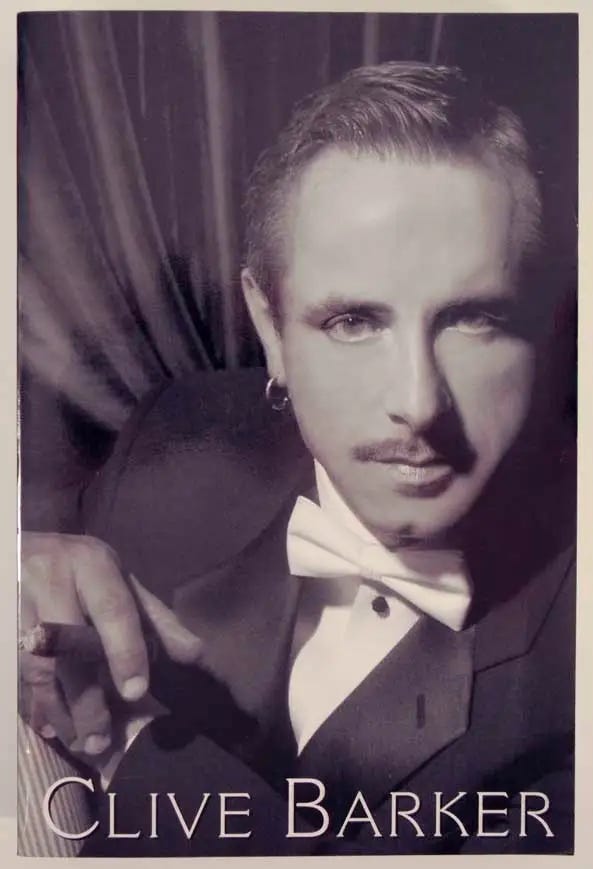My journey through Clive Barker’s oeuvre continues. These next three works seem pretty disconnected on the surface, but Barker has the uncanny gift of taking any medium or genre and making it his own. His takes on comic books, epic fantasies, and ghost stories are wholly original.
Clive Barker’s Next Testament (2013-14) by Clive Barker, Mark A. Miller, Haemi Jang, Vladimir Popov, and Steve Wands
That’s right! Clive Barker wrote a comic book series. I suppose it would be more accurate to say that he cowrote a comic book series. Maybe. I’ll get into that a bit more later.
The premise behind this twelve-part series published by BOOM! Studios from 2013-14 is that a billionaire named Julian Demond goes searching for God. I don’t mean that in the metaphysical sense. He isn’t going on a spiritual journey within himself. He is literally searching for the physical manifestation of the Abrahamic God on Earth. Spoiler alert: he finds him, but he isn’t quite what one might expect. This cosmic deity (calling himself Wick) had been imprisoned by two rival deities for a couple thousand years, and he is in a very bad mood about it. Now free, he wants to bring a whole new meaning to “god fearing.”
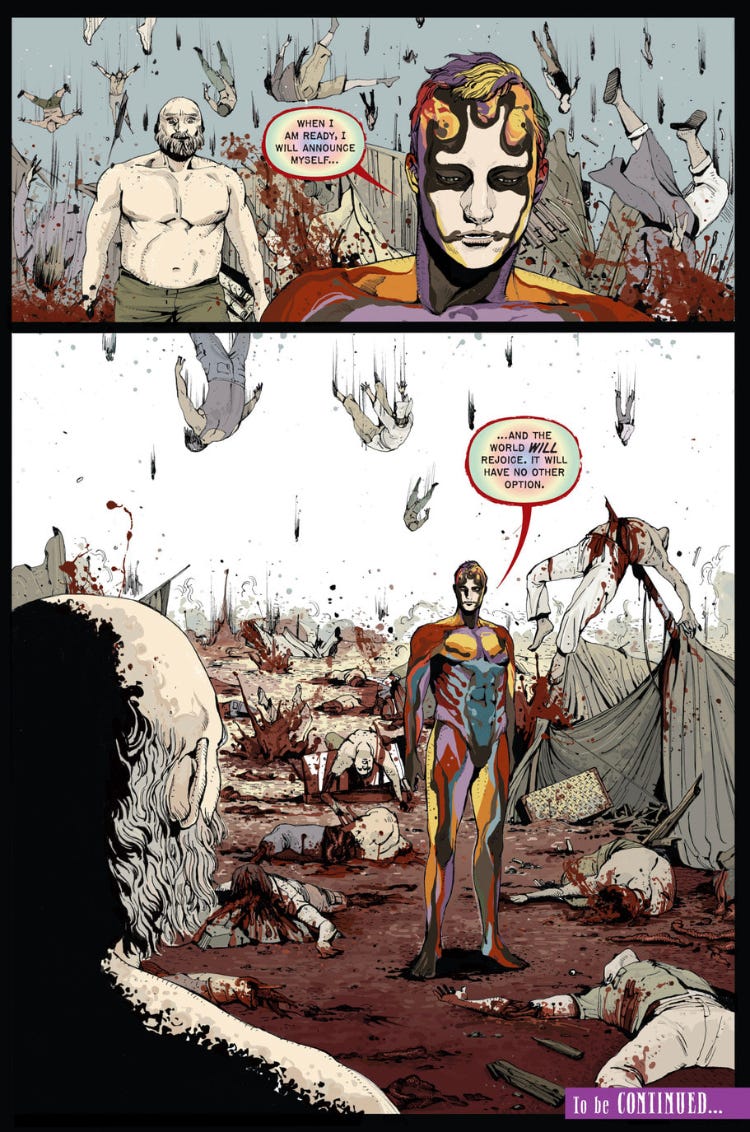
It’s a very clever and thought provoking series. This was my second time reading it straight through, and I think it holds up. It probably could have been trimmed down to six or eight issues instead of twelve, but I don’t think that’s too much of a problem. The look of Wick is especially cool thanks to artists Haemi Jang and Vladimir Popov. It was apparently based on photographs taken by Barker of his cowriter Miller who was serving as a model for his artwork.
That leads us to the elephant in the room. For those unaware, Clive Barker suffered from a near fatal bout of toxic shock syndrome during a routine dental procedure in 2012. It left him in a coma for several days. Really scary stuff. Barker survived this ordeal despite some dire prognostications from doctors, but it left him in very poor health. That obviously made it difficult for him to write. This is when he began working closely with Mark A. Miller as a cowriter. As I alluded to previously, he started off as a model for Barker’s art projects (Barker is a prolific painter). He eventually became the Vice President and Head of Development for Seraphim, Inc. (Barker’s production company). Following Barker’s health issues, Miller was credited with cowriting Next Testament (2013-14), editing The Scarlet Gospels (2015), and writing Hellraiser: The Toll (2018) based on a story concept by Barker. In 2020, Barker gave an interview where he elaborated on just how gravely ill he had been. He had apparently fallen into a second coma at one point, and he was bedridden for a number of years. He then mentions that he was unaware that his condition wasn’t widely known, and he follows that up by saying there was one person in particular who was invested in making sure people stayed in the dark about his condition during that time. He never names any names, but Mark A. Miller is no longer part of Seraphim, Inc. and no longer has a working relationship with Barker. I’ll let you draw your own conclusions. All I will add is that it makes one wonder just how much Barker contributed to things that had his name on them during this period.
The Great and Secret Show (1989)
I have a terrible confession to make: I had never read any of Barker’s novels that had been labeled as fantasy. I know. That rules out some of his most famous works. For whatever reason, traditional fantasy novels have just never appealed to me. Wizards, fairies, knights, and dragons don’t do much for me. I’ll watch The Lord of the Rings movies and Game of Thrones, but that’s about it. When I first saw that The Great and Secret Show was not only considered fantasy but was also the first part in an unfinished trilogy of novels, I decided to skip it. Having finally read it, I can now safely say that was a mistake. This book kicks ass.
The Great and Secret Show is both very complicated and ambitious. It opens with a character named Randolph Jaffe. He’s a postal worker in a dead letter office (a facility where undeliverable mail is sent) in Nebraska. Over the years, Jaffe becomes obsessed with occult conspiracy theories from various letters and packages that he has opened in the dead letter office (this guy would not have done well with internet access). He eventually learns of a secret society of mystics called The Shoal who practice a form of magic called The Art. Jaffe becomes obsessed with this mysterious group to a literally murderous degree, and he eventually learns of a metaphysical dream sea called Quiddity that humans can access exactly three times in their life: the first time you sleep after being born, the first time you sleep next to the love of your life, and the last time you sleep before you die. He eventually begins to consolidate magical powers and recruits a scientist named Fletcher to assist him in creating a substance called Nuncio that will allow humans to evolve into beings that can physically reach Quiddity instead of only when dreaming. Fletcher eventually turns on Jaffe (who at this point has transcended humanity and is now calling himself The Jaff), and the two engage in spiritual warfare with the fate of humanity hanging in the balance. Sound like a lot? All of this essentially happens in the prelude. That was all setup before the main cast of characters are even introduced. Did I mention that this book is ambitious?
I loved this book. I kept alternating between wondering why this has never been adapted into a movie or prestige television series and then reading the most deranged horrors imaginable and wondering how it managed to even get published in the first place. Barker is nothing if not utterly uncompromising in telling the story he wants to tell. As I mentioned previously, this novel is frequently described as fantasy. I think that is very misleading. This is most definitely a horror story. There are plenty of fantastical elements, but the tone and unspeakable acts that take place throughout are pure horror. If there is one criticism to make, it’s that there are probably too many characters and subplots for its own good. It’s easy to completely lose track of certain characters and their motivations for long stretches only for them to show up again later. That’s a very minor complaint though. This story is as imaginative as any I have ever read. The world building is unmatched, and the feeling of cosmic dread is palpable throughout. I will definitely be reading Everville (its sequel) very soon.
Coldheart Canyon (2001)
This was another first time read for me. Once again, it’s a novel I had put off reading for stupid reasons. Part of that was the synopsis of the novel. It was frequently described as a ghost story (the cover of the novel itself calls it “A Hollywood Ghost Story”) about a movie star who had gone into hiding from his fans and the tabloids after a botched plastic surgery operation. The place where he is hiding out just happens to be haunted. That description sounded so basic to me. It felt like a waste of Barker’s talents as one of the great horror writers of all time to tackle such a conventional horror story. The other reason I had put off reading it was because of the cover I had most frequently seen.
I know you shouldn’t judge a book by its cover, but it was tough for me to get past this one. It’s just a black and white photograph of Clive Barker in a suit holding a cigar. Clive Barker is a very handsome man. I don’t think anyone would disagree. I just don’t think it makes for a very good cover to a horror novel. Anyway, I finally shook off my hesitation and read Coldheart Canyon. I loved it.
You’d think I’d know better by now to think that a Clive Barker novel would be run of the mill in any fashion. This book is one of the wildest that he has written, and it might also be the horniest. That is saying quite a bit if you’re even slightly familiar with his work, but he has really outdone himself with this one. I have two words for you: ghost orgies. Dan Aykroyd would love this novel.
More importantly, this book feels like Barker’s ultimate indictment of Hollywood. He has plenty to say about the movie stars, studio executives (there is a character named Eppstadt who I swear has to be based on Harvey Weinstein), agents, and obsessive fans, but he also has plenty to say about the romanticized days of silent films of the 1920s and the debauchery lurking just below the surface. Barker does so in ways that are distinctly his own. The pages are populated with nigh unimaginable horrors. There are quasi sentient creatures that are the result of ghosts impregnating wild animals, there are portals to the Devil’s Country created by ornately painted tiles depicting blasphemous acts being committed, there are undead medieval knights trapped in an eternal hunt for the child of Satan, and there is a Romanian actress from the 1920s who mistakes control for love (and she might just be the scariest horror of them all). All told, this might have become my second favorite Clive Barker novel/novella that I’ve read after only The Hellbound Heart. Turns out you really shouldn’t judge a book by its cover.
I’m going to pause The Great Clive Barker (Re)Read of 2024 for now (my writings, not me reading) in favor of something different for the rest of the month of December. Hopefully you enjoy what I have cooking for next week.




